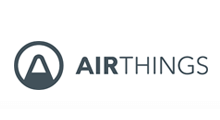
“Governors and Trustees on the most effective Boards will not only hold the school to account, but also hold each other to account.”
It is easy to just keep on doing the same things in the same way with the same people, but, when carefully planned, change can be exciting and rejuvenating, as well as a bit scary.
Ensuring clarity of vision, ethos and strategic direction is one of the 3 core responsibilities of a Governing Board. As a starting point Boards should consider whether they are clear about their vision, and the current and future challenges that could get in the way of achieving that vision.
All Boards should be actively involved in deciding the strategic direction of the school or Trust that they govern, which then flows into the school development plan.
Can your Board articulate the school vision and how they have contributed to it?
Discussion of mid- to long-term strategic vision will often form a core part of an away day for Governors and school leaders, where a cycle of review and renewal is also agreed. The executive leadership is responsible for the operational arrangements needed to deliver the vision, but Governors should also reflect upon what they need to do to maintain effective oversight and support.
In order to understand the route that any Board needs to travel to get to its desired destination, it needs to first understand its starting point.
It is good practice for Governing Boards to review their effectiveness on an annual basis, indeed Trusts need to include steps that they have taken to ensure that they are effective as part of their annual report.
Have you undertaken a skills audit to build up a picture of your current Board?
There are a number of skills audits available, but do these models really provide you with the information you need about the skills and attributes you need for your school? Consider running the process back to front. Start off by looking at what your school needs from its Governors.
Do you need all, most or some Governors to have these skills and attributes? Once you have decided this, tailor the skills audit to meet your needs and make sure that you have someone who will analyse the results and identify any gaps.
A good Board will also systematically evaluate its effectiveness through a process of review. An external review will be more costly, but provides an invaluable independent view of effectiveness.
A good reviewer will work with a Board to make sure that they look at any specific areas on request, as well as providing an overview of strengths and areas for development. We would suggest an external review every three years – maybe a year ahead of the Ofsted window opening - complemented by a process of regular self review in the interim.
Once you have established your start and end points, reflect on the extent to which you need to change to meet the needs of the future.
- Do you need to change any of your structures? Are your committees and link roles fit for purpose? Will reconstitution help you to become more effective?
- Map out when terms of office are due to expire, and the impact and opportunities that this presents. Are any key post holders, such as the chair, planning to step aside? Do we have succession plans for key roles in place?
- Are there significant gaps in the skills and commitment needed to steer the school in the right direction. Can these be met by recruitment or training?
Governors and Trustees on the most effective Boards will not only hold the school to account, but also hold each other to account.
Do you have courageous conversations as individuals and as a group?
All members of the Board should be encouraged to reflect upon whether they can offer what is needed for the future. It is easy to just reappoint those who are willing to serve without considering whether any vacancy could be better filled by someone with different skills, or who is able to offer more time to the school. The same goes for systematically reappointing to any key roles on the Board, particularly the Chair. Some Governance structures limit the terms of office any Governor or chair can serve. This can limit flexibility if you judge that you do have the right people in place, but long-term service should be by design rather than accident or inertia. Having a clear plan for the future direction of the Board can help de-personalise changes when the time comes.




